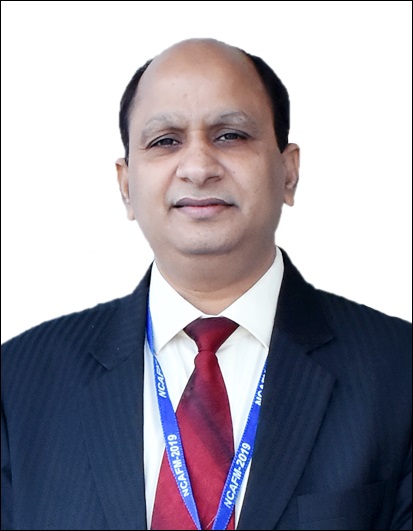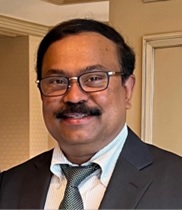We are pleased to invite all researchers, young scholars, delegates, experts and students from all over the world to attend the International Experts Summit on Polymerscience and Biomaterials in Nanomedicine (IESPBN2023) will be held in Nice, France during November 06-08, 2023.
IESPBN2023 provides a platform of international standards where you can discuss and share knowledge on Polymerscience and Biomaterials in Nanomedicine to bring a unique forum for exchanging the information regarding the latest developments, finding solutions and enriching the knowledge. In addition to Presentations, Workshops, and Discussions, the conference also offers a unique venue for renewing professional relationships, and providing plenty of networking opportunities during the summit.
We’re looking forward to Meghaz meetings with researchers from different countries around the globe for sharing innovative and great results in Polymerscience and Biomaterials in Nanomedicine.
Abstract Submission Deadline14 Jul, 2023
Earlybird Registration Deadline23 Mar, 2023
Standard Registration Deadline24 Jul, 2023
Onspot Registration06 Nov, 2023
Polymer Materials
Polymer Science and Technology
Polymers for Emerging Technologies
Applications of Polymers in Medicine, Health and Biotechnology
Polymeric Systems for Biomedical applications
Polymers Electrochemistry
Advanced Synthetic Polymers and Catalytic Materials
Polymer Design and Reaction
Polymer Synthesis and Polymerization
Colloid and Polymer Science
Polymeric Material Chemistry and Physics
Polymer Electronics: Optics, Fiber and Lasers
3D Printing Polymers
Synthetic and Green Polymers
Polymers in Petroleum Refinery
Oils and Bio-Inorganic Materials
Biopolymers and Bio plastics
Biochemical-Bio Degradation of Polymers
Environmental Impact of Polymer-Waste Disposal
Polymer Membranes for Environments and Energy
Recycling and Waste Management of Bio-polymers
Composite Materials
Advanced Composite Materials and Technologies
Composite Materials in Aerospace Applications
Composite Materials & Technology for Defense
Marine Applications of Advanced Fibre-Reinforced Composites
Computational Materials Science
Biomaterials and Tissue Engineering
Composite Materials – Applications
Plastic Processing and Composite Materials
Organic and Inorganic Composites
Future of Thermoplastic Composites
Self-Healing Composites
Carbon Matrix Composites
Ceramic Matrix Composites
Metal Matrix Composites
Bio-Fibers and Composite Materials
Mechanical and Physical Properties of Composite Materials
Recycling Technologies for Thermoset Composite Materials

Hebei University of Technology/Interstellar Therapeutics
USA

Nanyang Technological University
Singapore

Kyushu University
Japan

Kansas State University
USA

Monash University
USA

Jamia Millia Islamia
India

Beijing Institute of Technology
China

North Carolina State University
USA

Hokkaido University
Japan

Osaka University
Japan

Poznań University of Life Sciences
Poland

South Eastern University
Sri Lanka

Stanford University
USA

Chungnam National University
Korea

VIT-AP University
India

National Research Center
Egypt

Institute of Natural Medicine
Nepal

Universiti Sains Islam Malaysia
The Nice agglomeration extends far beyond the administrative city limits, with a population of nearly 1 million on an area of 744 km2 (287 sq mi). Located on the French Riviera, the southeastern coast of France on the Mediterranean Sea, at the foot of the French Alps, Nice is the second-largest French city on the Mediterranean coast and second-largest city in the Provence-Alpes-Cote d'Azur region after Marseille. Nice is approximately 13 kilometres (8 mi) from the principality of Monaco and 30 kilometres (19 mi) from the French–Italian border. Nice's airport serves as a gateway to the region.
The city is nicknamed Nice la Belle (Nissa La Bella in Nicard), meaning 'Nice the Beautiful', which is also the title of the unofficial anthem of Nice, written by Menica Rondelly in 1912. The area of today's Nice contains Terra Amata, an archaeological site which displays evidence of a very early use of fire 380,000 years ago. Around 350 BC, Greeks of Marseille founded a permanent settlement and called it Νίκαια, Nikaia, after Nike, the goddess of victory. Through the ages, the town has changed hands many times. Its strategic location and port significantly contributed to its maritime strength. From 1388 it was a dominion of Savoy, then became part of the French First Republic between 1792 and 1815, when it was returned to the Kingdom of Piedmont-Sardinia, the legal predecessor of the Kingdom of Italy, until its re-annexation by France in 1860.
Read More